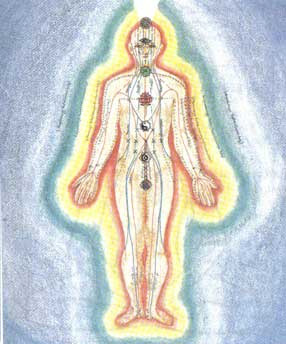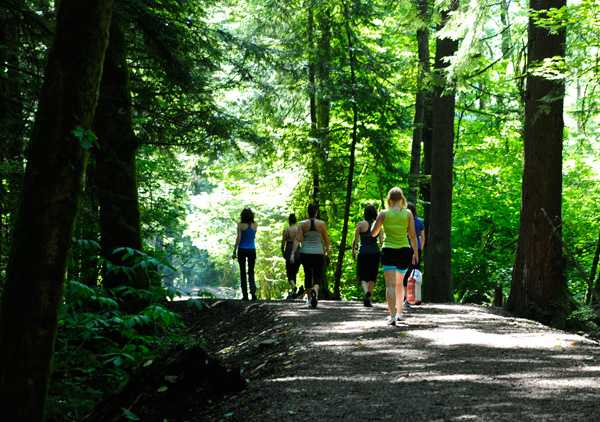
The Challenge
June 15, 2013
The Zen Lines of Thai Yoga Massage
July 23, 2013Yoga is more than an exercise, it’s a lifestyle. As an avid practitioner and teacher of hatha yoga, I actively participate in this ‘yoga lifestyle’ – I buy products made of organic material, recycle and compost whenever I can, drink tap water out of a reusable water bottle, ride my bike whenever possible, wash my clothes in cold water and consume organic, locally grown whole foods. However as the popularity of yoga increases with the temperature of our planet, I notice more Starbucks cups in the trash after class and less green living than I see in Yoga Journal advertisements. I find myself wondering if other yogis share the same environmentally friendly habits – does practicing yoga actually make you more environmentally sustainable, or is it simply a pretence perpetuated through the media?
Global Environmental Crisis
Human caused global warming, also known as anthropogenic climate change, is the main source of our planet’s demise; humans are pouring carbon dioxide into the atmosphere at a rate that is faster than the plants and oceans can absorb. My belief is that human beings have become disconnected with the planet. They do not feel that the planet’s health is a direct threat to their own lives, and therefore they do not make a great effort to change their lifestyle. Our planet’s wellbeing is not personal enough.
Imagine that someone you loved was diagnosed with a life threatening disease – coronary heart disease, for example. After enduring all of the testing, you arrive at the doctor’s office with your loved one and receive the bad news. Although this disease cannot be cured through diet and exercise alone, the severity can be diminished. The doctor recommends your loved one must eat more green and red vegetables every day, less fatty food and get at least 30 minutes of cardiovascular exercise three times a week. Because this person is someone you love and care about deeply, you would most likely encourage them to follow the doctor’s orders, even taking it upon yourself as your own responsibility. If their health depends directly upon their actions, then you would do everything in your power to ensure they are the healthiest they can possibly be while struggling with this disease.
My point is – how do we carry the health of the planet with the same weight that we carry the health of our loved ones? Human beings have lost this deep connection with our planet – we use and abuse its resources with blatant disregard for the consequences. We do not feel the burden of the earth’s health in a personal enough way to change our behavior.
Mahatma Gandhi said that “As human beings, our greatness lies not so much in being able to remake the world, as in being able to remake ourselves.” This wise quote expresses the power of yoga as an instrument in transforming our lives and our planet starting at the source – our body, our mind and our actions. Through the practice of yogic philosophy and asana, humans have the ability to awaken reverence for all beings and the planet, ultimately growing more connected with our surroundings. The connection of body, mind and soul that you can achieve through the practice of yoga can also be applied to our planet – when you are more in tune with your surroundings, you are more personally affected by the health and well being of them.
Ahimsa
Ahimsa is the first of the yama’s; the literal translation means ‘to do no harm’, or non-harming. Applied in practicality, ahimsa instructs kindness and non violent tendencies towards all living things – including animals and the environment – on the basis that all living beings are connected. Ahimsa can be applied in many ways. It begins with self-reverence, acquired through the practice of cultivating compassion for oneself in thoughts, words and actions. When we practice ahimsa in asana, we practice compassion for our bodies – not pushing or forcing our bodies in to a pose that it may not be ready for. When you treat yourself with respect and gentleness, it becomes easier to do the same for others, even if the others are choosing violent behaviors. With other humans, ahimsa means avoiding toxic or negative behaviors, words, actions and thoughts and instead choosing the non harming alternative. With ahimsa, violence is found in the intention, so you can only be free from violence if you cultivate positive and loving intentions. Relieving yourself of negativity through the practice of ahimsa enables conscious nonviolent actions, rather than emotional reactions.
With environmentalism, ahimsa can be applied in our treatment towards all living beings. Ahimsa rejects all violence towards living beings, including animals. This principle implies a ban on butchery, hunting, meat eating and the use of animal products that are obtained through violent means. If vegetarianism is not possible or not likely, then the consumption of animals must be done in an ethically sound manner, causing as little harm as possible to the animal. Ahimsa rejects any cruelty or violence toward animals, so we must be conscious of our consumption and choose the least violent option. If you are going to consume animals, it should be predetermined that these animals have the following rights while alive: they have the opportunity to move around in sufficient space; they have a natural cycle of day and night; they can interact with other animals of the same species; and finally that they have a natural diet. Most of this information can be found at a local butcher – so just ask!
With the treatment of our environment, ahimsa can be applied in many capacities. We must constantly be aware of the possible harming affects of our actions. Making simple choices that do not harm our environment are essential – carpool whenever possible, walk or ride your bike instead of driving, use a compost at home, drink tap water, use reusable cups and water bottles, reduce waste and always recycle.
In many cases, choosing ahimsa will involve sacrifice. Working with some practical examples, we can evaluate how ahimsa may be applied in day to day life. If you are out and want a coffee, but you do not have a reusable cup with you, then do not purchase coffee, or ensure that all pieces of your cup are recycled. If driving your car to work or school every day is more convenient and comfortable, but you have the option of public transportation, then choose the option that will do less harm to the environment. In a situation where an animal product is from an unknown source, then do not consume that product. When these choices become difficult, we must remember that in order to see environmental change in our world, we must feel the weight of the health of the environment in the same capacity as we would feel the health of a loved one. We have the choice to treat our environment with ahimsa, and in order to see change in the world, we must start with everyday actions.
Prestonne Domareski





